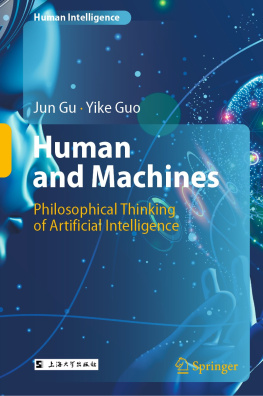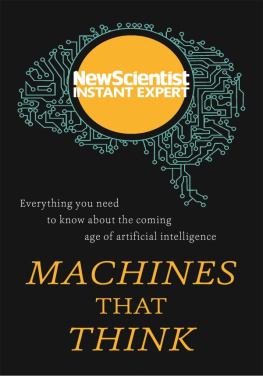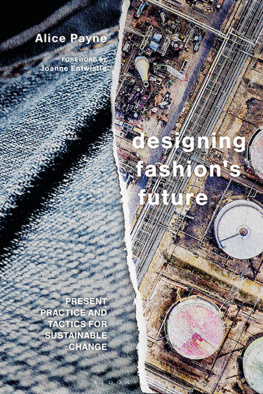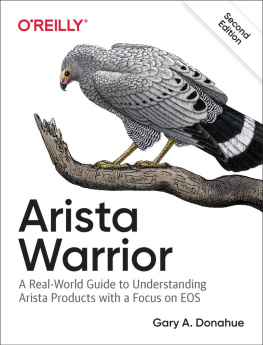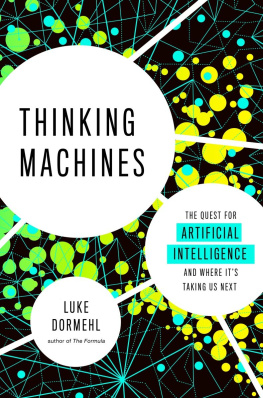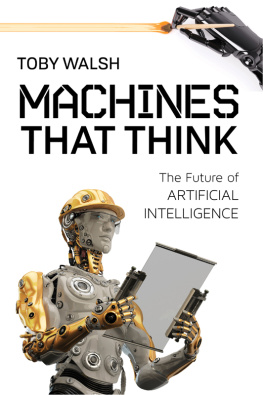Noelani Arista - Designing a Human Future with Machines
Here you can read online Noelani Arista - Designing a Human Future with Machines full text of the book (entire story) in english for free. Download pdf and epub, get meaning, cover and reviews about this ebook. publisher: MIT Press, genre: Romance novel. Description of the work, (preface) as well as reviews are available. Best literature library LitArk.com created for fans of good reading and offers a wide selection of genres:
Romance novel
Science fiction
Adventure
Detective
Science
History
Home and family
Prose
Art
Politics
Computer
Non-fiction
Religion
Business
Children
Humor
Choose a favorite category and find really read worthwhile books. Enjoy immersion in the world of imagination, feel the emotions of the characters or learn something new for yourself, make an fascinating discovery.

- Book:Designing a Human Future with Machines
- Author:
- Publisher:MIT Press
- Genre:
- Rating:5 / 5
- Favourites:Add to favourites
- Your mark:
- 100
- 1
- 2
- 3
- 4
- 5
Designing a Human Future with Machines: summary, description and annotation
We offer to read an annotation, description, summary or preface (depends on what the author of the book "Designing a Human Future with Machines" wrote himself). If you haven't found the necessary information about the book — write in the comments, we will try to find it.
Designing a Human Future with Machines — read online for free the complete book (whole text) full work
Below is the text of the book, divided by pages. System saving the place of the last page read, allows you to conveniently read the book "Designing a Human Future with Machines" online for free, without having to search again every time where you left off. Put a bookmark, and you can go to the page where you finished reading at any time.
Font size:
Interval:
Bookmark:
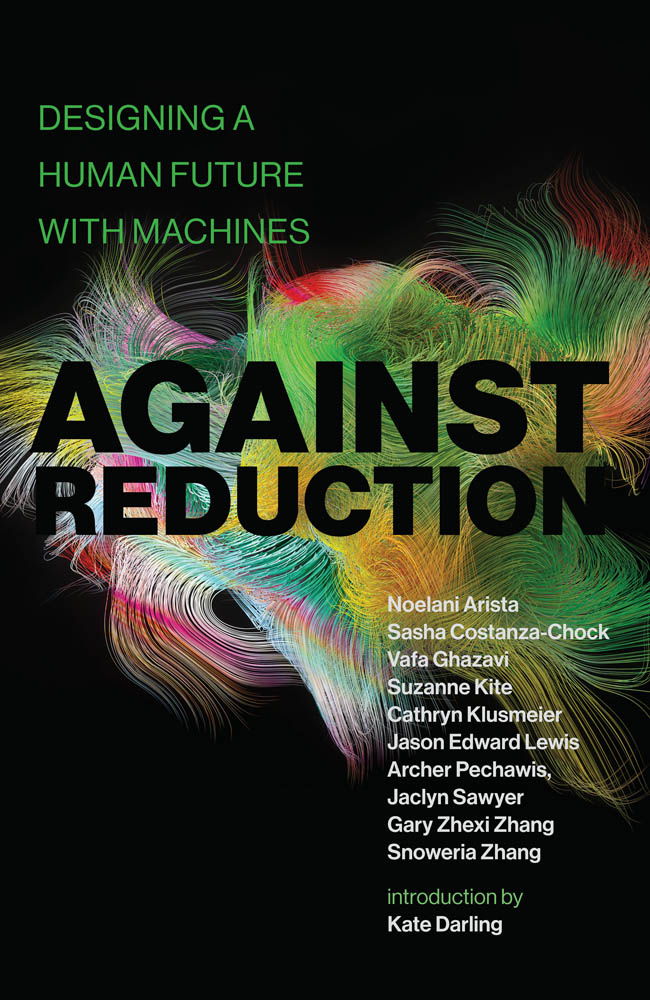
AGAINST REDUCTION
DESIGNING A HUMAN FUTURE WITH MACHINES
Noelani Arista, Sasha Costanza-Chock,
Vafa Ghazavi, Suzanne Kite, Cathryn Klusmeier,
Jason Edward Lewis, Archer Pechawis,
Jaclyn Sawyer, Gary Zhexi Zhang, And
Snoweria Zhang
Introduction by Kate Darling
The MIT Press
Cambridge, Massachusetts
London, England
2021 Massachusetts Institute of Technology
This work is subject to a Creative Commons CC-BY-NC-ND license.

Subject to such license, all rights are reserved.
The MIT Press would like to thank the anonymous peer reviewers who provided comments on drafts of this book. The generous work of academic experts is essential for establishing the authority and quality of our publications. We acknowledge with gratitude the contributions of these otherwise uncredited readers.
Library of Congress Cataloging-in-Publication Data
Names: Arista, Noelani, author.
Title: Against reduction : designing a human future with machines / Noelani Arista, Sasha Costanza-Chock, Vafa Ghazavi, Suzanne Kite, Cathryn Klusmeier, Jason Edward Lewis, Archer Pechawis, Jaclyn Sawyer, Gary Zhexi Zhang, Snoweria Zhang ; introduction by Kate Darling.
Description: Cambridge, Massachusetts : The MIT Press, [2021] | Includes bibliographical references and index.
Identifiers: LCCN 2020053013 | ISBN 9780262543125 (paperback)
Subjects: LCSH: Artificial intelligence--Moral and ethical aspects. | Artificial intelligence--Social aspects.
Classification: LCC Q334.7 .A75 2021 | DDC 303.48/34--dc23
LC record available at https://lccn.loc.gov/2020053013
d_r0
- Kate Darling
- Jason Edward Lewis, Noelani Arista, Archer Pechawis, and Suzanne Kite
- Snoweria Zhang
- Sasha Costanza-Chock
- Cathryn Klusmeier
- Jaclyn Sawyer
- Gary Zhexi Zhang
- Vafa Ghazavi
Kate Darling
We shouldnt always resist reduction. Our ability to simplify things helps us to interpret complicated situations and make efficient judgments. Many economic models, for instance, attempt to map out complex processes and behaviors using a simplified mathematical framework. By getting rid of the messy details and painting a situation in brushstrokes, complexity can be reduced by convenient tools that assist us in investigating trends and making useful predictions about an often-chaotic world.
But while reduction can be helpful, our inherent tendency to simplify is dangerously seductive. As a college student, I remember listening to our lecturer Or Baron Gil liken economic models to a wrench. A wrench is a useful toolpowerful evenwhen applied to a bolt. But when applied more broadly, its inefficient at best and harmful at worst. The tricky part is knowing when and how to simplify, and we avoid that exercise at great expense.
This project began with a manifesto by Joi Ito called Resisting Reduction. In it, Ito urges us to push back against our tendency to reduce everything, and to embrace the diversity and irreducibility of the world. In particular, he speaks to our current conception of artificial intelligence, suggesting that we reframe it as extended intelligence, and that we apply more diverse measures of success to our future with machines, eschewing our narrow benchmark of economic growth to instead work toward a culture of flourishing.
In an endeavor to embrace the message of the original manifesto, this volume collects essays from others to expand on and probe its ideas, including shining a light on whatever unintentional reduction it might commit. (Even when highlighting the perils of reduction, Ito knew he would be susceptible to veering toward its siren song.) Through an open blind peer-review competition, the editorial team collected 260 abstracts, selected fifty to develop into full essays, published sixteen online in the Journal of Design and Science, and selected ten as the competition winners, seven of which are included in this volume.
While Itos original piece is powerful, this volume as a whole is even more so. Thoughtful, provocative, and beautiful, the diverse collection of responses gathered here provides an insightful guide to different ways of recognizing and addressing the reduction in our approach to artificial (nay, extended) intelligence, and ultimately to ourselves.
Some readers might connect this projects originator to events that roiled MIT in 2019. In the fall of that year, as this very collection was being readied for publication, Joi Ito stepped down as director of the MIT Media Lab. With his affiliation as director printed on the cover, the MIT Press was forced to shred five thousand copies of this text. I feel I cannot write this introduction without acknowledging these events.
In August 2019, Ito published an apology in which he came forth about accepting funding from Jeffrey Epstein, the late financier and convicted sex offender. The statement attracted a large amount of news media and public criticism, culminating a few weeks later in an article by Ronan Farrow in the New Yorker, which allegedin a reductionist way that should have long since been retracted as more facts emergedthat Ito had attempted to conceal the relationship with Epstein and the donations he received on behalf of the Media Lab. Farrows piece caused further public backlash, and the following day, Ito resigned as director of the Media Lab, as well as from all other institutions with which he was affiliated.
Aja Romano defines getting canceled as being culturally blocked from having a prominent public platform or career. It is caused by public backlash to someones behavior. The term cancel culture has been criticized as a catchall used to delegitimize the voices of the harmed. It also hasnt been as career-damaging as sometimes portrayed, with many of the people who have been publicly called out suffering only a temporary dip in their livelihoods. But the broader point I want to make is that using public backlash as a tool for change is sometimes reductionist.
Dont get me wrong: cancel culture has plenty of justification. At the same time that Ito came forward about the Epstein funding, I was struggling through an internal sexual misconduct investigation at MIT. In June 2019, I had formally reported that my direct supervisor at MIT had slipped his arm around my waist and pulled my body close to his. I detailed how I had tried to end the hug while he grasped me tightly and kissed my cheek, close to the mouth, multiple times, massaged the top of my hip with his hand, and said the words Dont worryIll take care of your career.
While I believe that those accused of sexual misconduct should be protected against baseless accusations, Ive personally experienced the maddening frustration of an internal process that attempts to be fair yet makes it nearly impossible for anyone who reports sexual misconduct to prevail. The data shows that this behaviorand worseremains a massive problem at universities. Those who have suffered, and continue to suffer, these abuses are justifiably angry; and even more so when theyre told not to speak ill of the people who have harmed them until the deeds are proven. Often, cancel culture is the only tool available to those who have been consistently denied justice. Cancel culture needs to exist in certain contexts right now, because, in the complete absence of any adequate solutions, it lets us expose, disarm, and deter some of the harm.
Font size:
Interval:
Bookmark:
Similar books «Designing a Human Future with Machines»
Look at similar books to Designing a Human Future with Machines. We have selected literature similar in name and meaning in the hope of providing readers with more options to find new, interesting, not yet read works.
Discussion, reviews of the book Designing a Human Future with Machines and just readers' own opinions. Leave your comments, write what you think about the work, its meaning or the main characters. Specify what exactly you liked and what you didn't like, and why you think so.


